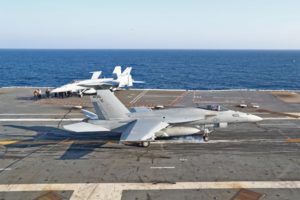
The newest aircraft carrier, the USS Gerald R. Ford (CVN-78), completed its Flight Deck Certification (FDC) and Carrier Air Traffic Control Center (CATCC) Certification on March 20 after completing 1,000 aircraft launches and recoveries. To prove the ship capabilities, the carrier both finished a Precision Approach Landing Systems (PALS) certification and conducted 123-day and 42-night catapult launches and trap recovering over two consecutive days of flight operations. The minimum requirements were to complete the PALS certification and conduct at least…

 By
By 











